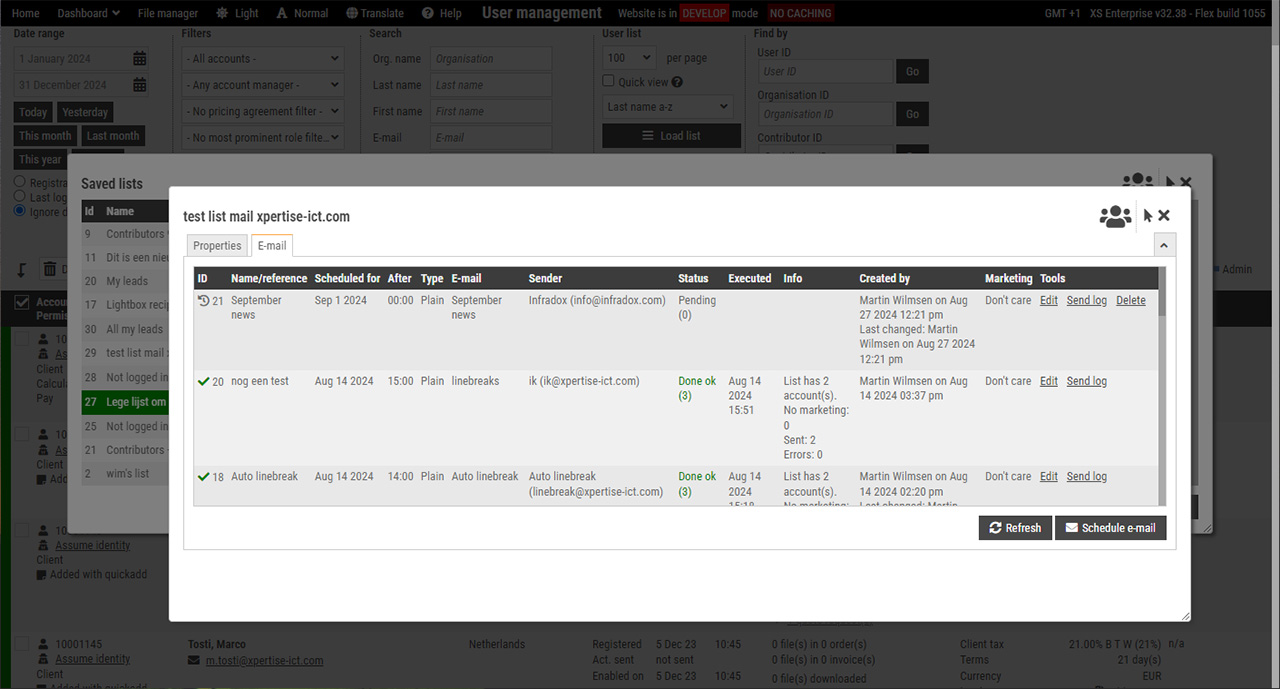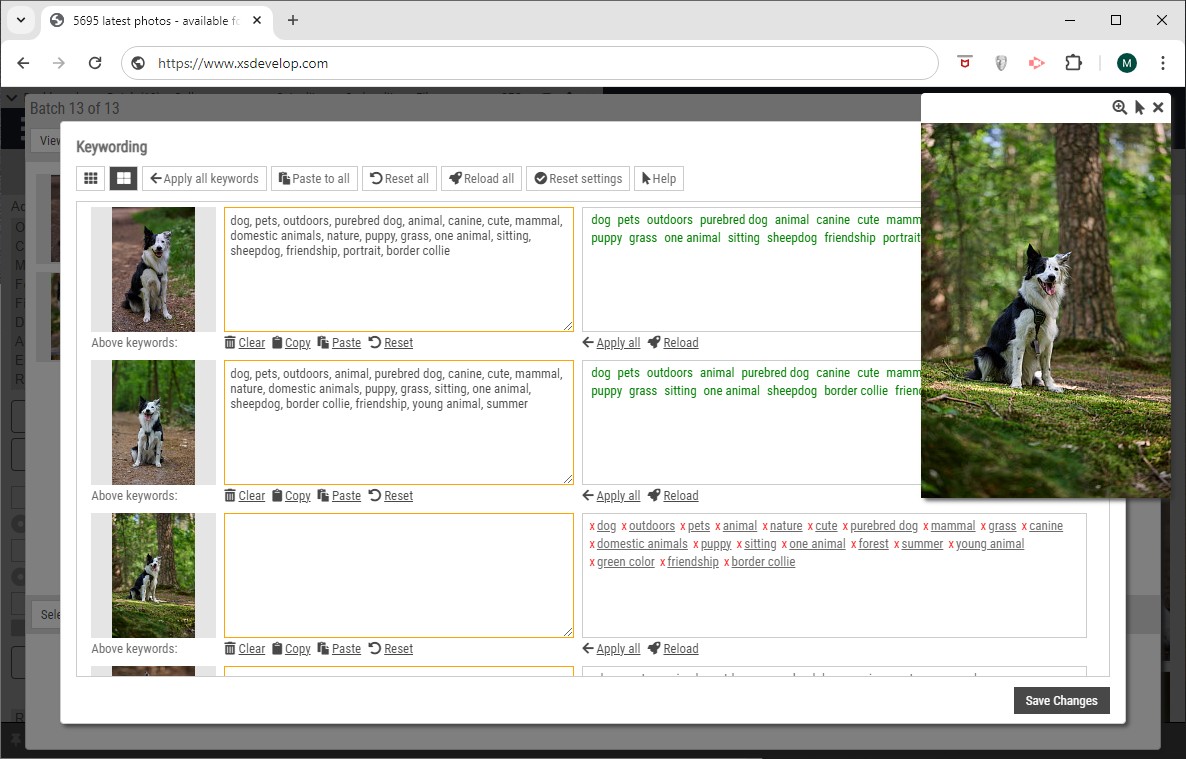Quote requests that are posted on the client facing website are stored in the database. You can keep track of the status of such requests and you can have quote requests and all related information appear in the user’s account on the client facing pages. Users can even be allowed to reply to your comments and you can link quote requests to orders if a sale is made.
Note that this article describes the ‘simple’ quote request form.
– You can also configure the price calculator and then link it to the Quote request button instead.
– If your website is on Flex 32.11 or later, you can create a custom quote form (with 10 optional extra custom fields) in the Code editor.
The user input will be send by e-mail and also stored in the database, regardless of which option you choose.
If you’re using the price calculator for the quote function, then scroll down to paragraph 3.
1) Configure the form
In backoffice, go to Site configuration, Website forms and open the “Quote form” section. You can leave the labels and texts blank to automatically use the system defaults in the current user interface language. If you want to change the defaults, then you can enter your own texts. Remember to enter text for each of the locales that you have enabled for your website.
Next, select the fields that you want to appear in the quote form – and whether or not fields are required.
In addition to the name and address fields, there are 5 specific fields that you can use (you can specify your own labels for each of these):
- Project title
- Intended use
- Budget
- Territory
- Exclusivity
- Preferred method of contact
These fields are normal text input fields. However, you can upload text files for the fields Intended use, Territory, Exclusivity and Preferred method of contact – if you want these fields to appear as dropdown boxes with predefined values.
2) Prepare and upload text files for your downdown boxes
Some of the fields described in the previous paragraph can be displayed as dropdown box.
Below is an example for the field Intended use.
– Create a text file with the name quote_usage_us.txt.
– Add the value that you want users to choose from in the text file, each value on its own line.
– Save your file.
If your website is configured to work with additional user interface languages (locales) then create files as above for each locale.
E.g. for French, replace the _us part of the file name with _fr. So quote_usage_fr.txt.
If you don’t upload localised versions, then the values will be taken from the English version file regardless of the selected user interface language.
– When you have your files ready, go to Site configuration, Website files and open the section Website list files – and upload your files.
Below is an overview of the file names for each of the fields (replace the [locale] part with us, nl, fr, de, es):
- Intended use: quoteusage_[locale].txt, e.g. quoteusage_us.txt for English
- Territory: quoteterritory_[locale].txt
- Exclusivity: quoteclusivity_[locale].txt
- Contact method: quotecontact_[locale].txt
3) Enable the Quote button on the preview pages
Go to Site configuration, Preview page and open the section Buttons. Scroll down to the settings under the heading Quotation and choose an option. E.g. Show always or if you also have RF files with fixed prices then you may want to use Show always but for RM files only.
You can select any of the following options:
- Never show button (hides the Quote button always)
- Show always
- Show always but user must be logged in to use this function
- Show only if not logged in
- Show always but for RM files only
If you want to link the Quote button to the price calculator dialog, then change the dropdown box underneath the radio buttons to the desired setting. You can select any of the below options:
- Default Quote form
- Use price calculator without prices
- Use price calculator with prices
The default Quote form is the ‘simple’ form that you configure via Website Forms as described above. For help regarding the price calculator, read price calculator for RM images.
Save your settings at the bottom of the page.
4) E-mail templates
The quote function uses three different e-mail templates. You can change the templates via Site configuration, E-mail templates.
- quoteform.txt
This template is used to send notifications if a new quote is posted. The default recipient is the e-mail address that you have configured via E-mail configuration. If you want the e-mail sent to a different address, then add it to the template. This is explained in the article E-mail configuration and templates. - quotechangetouser.txt
This template is used to send an e-mail to the user if something has changed re his/her quote request. Note that you can prevent the e-mail from being sent when you change a quote request. E.g. when you add notes, a reply, change the price or status and so on. - quotechangetoadmin.txt
This template is used to send a notification to you when the user changes the quote requests.
If you are using a custom quote form (created with the code editor) with custom fields, these are added to the e-mail automatically.
5) Testing
Go to a preview page or modal preview, and click the Quote button. Complete the form to make sure everything works as expected.




